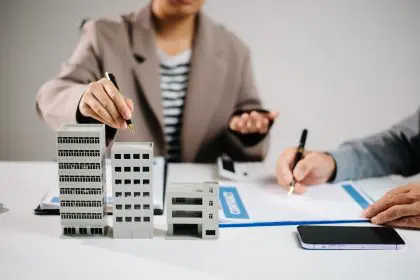Stamp collecting — often called philately — is one of the most rewarding and timeless hobbies you can undertake. It allows you to journey through history, geography, art and culture, all within the small canvas of a postage stamp. Starting a collection can be overwhelming, but with the right strategies, you can quickly build an impressive and meaningful assortment. In this guide, we will walk through five of the best strategies to kickstart your stamp collection and ensure that it remains an exciting and fulfilling endeavor.
1. Choose a focus for your collection
The first step in building a stamp collection is deciding on a specific focus. Whether it’s based on country, theme or historical period, this initial choice will help narrow down your options and make collecting more manageable. Many beginner collectors are tempted to gather stamps indiscriminately, but having a clear direction will add purpose to your collection. For example, you could collect stamps from a specific country — such as the United States or France. Alternatively, you might prefer thematic collections such as stamps featuring animals, famous figures or historical events.
By setting a focus, you not only give your collection a sense of cohesion, but you also increase its value — both monetarily and sentimentally. Over time, as your knowledge deepens, you’ll appreciate how your focus allows for more nuanced appreciation of the stamps you gather.
Why a focused collection matters
Narrowing down your collection will also prevent you from feeling overwhelmed. Instead of trying to amass stamps from every country or topic, focusing allows you to take a deeper dive into your subject of interest. It also makes stamp hunting more exciting as you can search for rare or special items related to your chosen theme. The focus keeps you grounded, ensuring your collection is a reflection of what you truly love.
2. Understand stamp grades and condition
The value of stamps is determined by their rarity, but also by their condition. As a beginner, it’s important to familiarize yourself with how stamps are graded. Stamps in mint condition — meaning they’ve never been used and are as pristine as when they were printed — are generally the most valuable. However, used stamps can also hold significant worth — especially if they’re rare or part of a limited edition.
When examining a stamp, pay close attention to factors such as its color, centering, perforation and gum (the adhesive on the back). Avoid stamps that are torn, have missing perforations or are heavily creased. Even as a new collector, it’s worth learning to discern the differences in condition so you can make informed decisions about what to add to your collection.
The emotional value of well-preserved stamps
There’s something deeply satisfying about acquiring a stamp in near-perfect condition. It’s not just about monetary value; a stamp that’s been well-preserved offers a tangible connection to the past, allowing you to marvel at how something so delicate has survived through decades or even centuries. The care and attention you put into maintaining the quality of your collection will amplify your pride in it.
3. Build relationships with other collectors
One of the joys of stamp collecting is that it opens up opportunities to connect with a community of like-minded individuals. Whether you’re a novice or seasoned philatelist, there are many platforms — both online and offline — where you can interact with other collectors. Joining a local stamp club or attending philatelic events can introduce you to mentors who can offer valuable tips, help you find stamps and even trade with you.
Online forums and social media groups are also great resources for building connections. These communities often host discussions on stamp values, trends and collections, allowing you to expand your knowledge and make informed choices. Building relationships with fellow collectors can also lead to opportunities to purchase or trade rare stamps that may not be available through conventional channels.
Emotional reward of community building
Being part of a community adds another dimension to the hobby. Whether it’s sharing the thrill of a new find, learning from a seasoned collector or simply chatting about favorite stamps, these connections enrich the experience. It turns the hobby from a solitary activity into a shared passion, filled with camaraderie and mutual appreciation.
4. Invest in quality storage and tools
As you begin to amass stamps, proper storage and tools are essential to preserve their condition and enhance your collection’s presentation. Stamp albums are the most popular way to store stamps, but make sure to select an album with acid-free paper to prevent damage. Many collectors use stamp hinges or mounts to affix their stamps securely while ensuring they’re easily removable.
In addition to albums, other tools are invaluable for collectors. A magnifying glass helps you inspect the finer details of a stamp’s condition, while stamp tongs (specialized tweezers) allow you to handle stamps without causing damage from oils on your fingers. Having the right tools will make the collection process easier and more enjoyable — allowing you to properly care for and display your stamps.
The satisfaction of protecting your collection
There’s a distinct sense of fulfillment in knowing you’ve done everything possible to preserve your stamps. By investing in proper storage, you’re safeguarding not only the financial value of your collection but also the emotional investment you’ve made in each stamp. Well-protected stamps tell a story of care, dedication and respect for history.
5. Start small but stay curious
One of the most important strategies for beginner collectors is to start small. You don’t need to immediately chase after rare or expensive stamps. Instead, begin with more accessible options, such as commemorative stamps — which are often widely available and affordable. Starting small also gives you time to learn the ins and outs of philately without the pressure of making costly mistakes.
As you grow your collection, let curiosity guide you. Stamp collecting is a hobby that can take you to unexpected places, revealing fascinating aspects of history and culture. Keep learning, whether by reading up on the background of the stamps you collect or by exploring new avenues for expanding your collection. By staying curious, you’ll ensure that your collection evolves in ways that keep the hobby exciting and fresh.
The joy of discovery
Every stamp carries with it a small piece of the world, waiting to be discovered. Whether it’s a stamp commemorating a historical event or one that features a beautiful landscape, each addition to your collection offers a new opportunity to learn and appreciate. There’s an endless world of stamps out there, and the more curious you remain, the more fulfilling your collection will be.
A hobby that grows with you
Starting a stamp collection is about more than simply amassing tiny pieces of paper — it’s about building a bridge to the past, connecting with a global community and discovering new stories with every stamp. By following these five strategies — choosing a focus, understanding condition and grading, connecting with fellow collectors, investing in quality storage and starting small — you’ll not only develop a robust collection but also find immense joy in the journey. Stamp collecting is a hobby that grows with you, constantly offering new opportunities for discovery, learning and connection.
So why wait? The world of philately is vast and waiting to be explored.
This story was created using AI technology.











